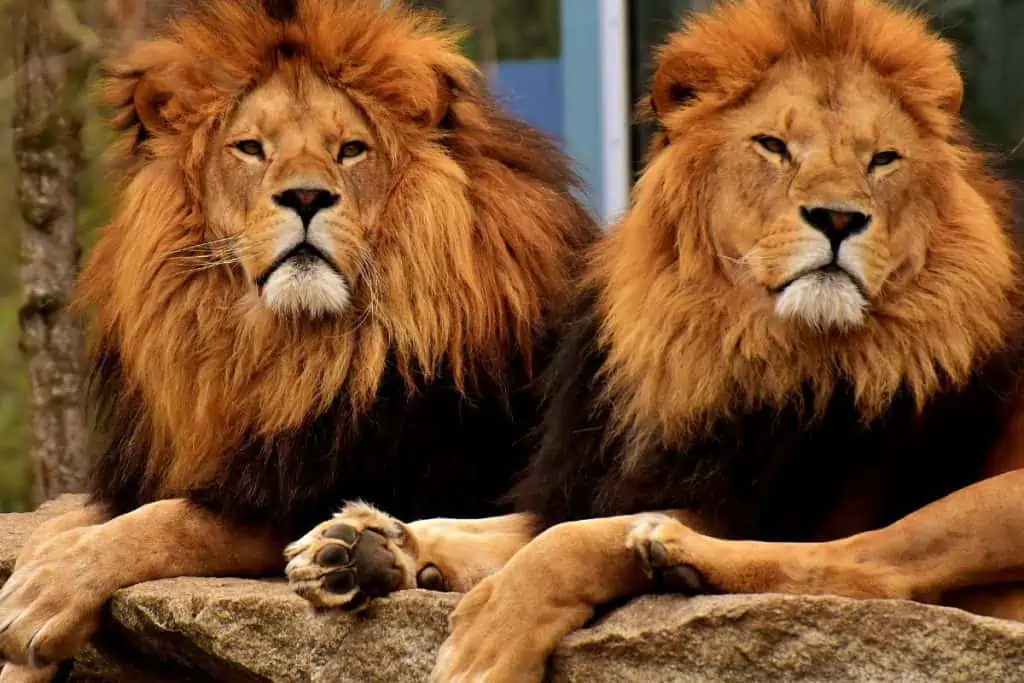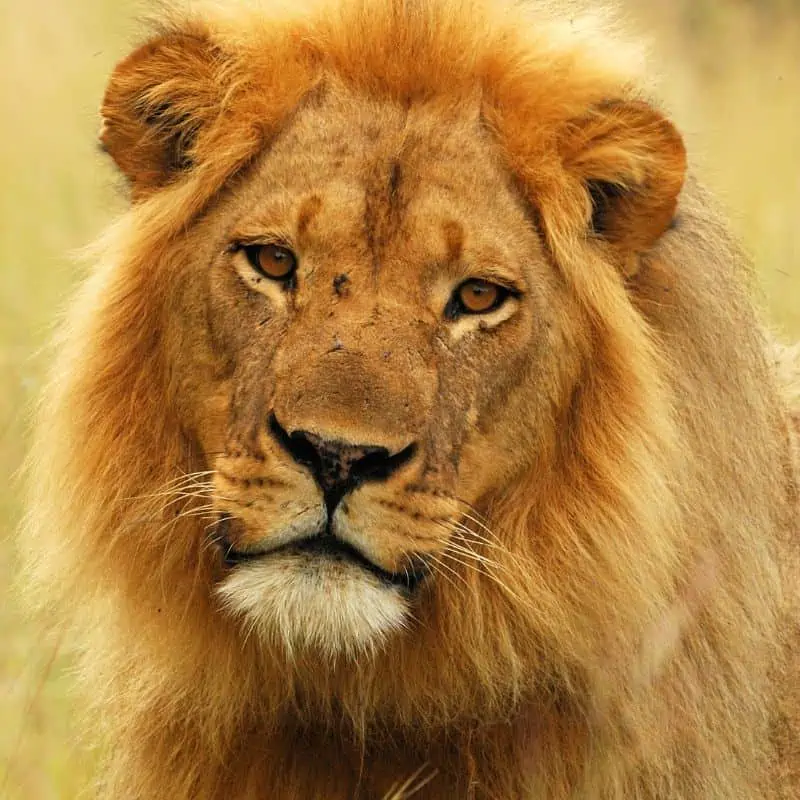Lions are powerful felines with strong bodies and muscular frames. They are known for their majestic manes that help to distinguish them from other animals. But why do lions have manes in the first place?
Lion’s manes provide protection and warmth in cold climates and can be used to attract mates or show dominance over rivals. It protects the lion’s neck during a fight. The thicker the mane, the more attractive it is. They also make the lion appear larger and more intimidating to predators.
In this article, I’ll explore why lions have manes, how their size and shape differ from other animals, and why they need such a distinct feature.

What Is a Lion’s Mane?
A lion’s mane is the protective layer of long, thick hair that male lions develop with age. It is an impressive coat and creates a distinct mane-shaped crest around the head.
Their majestic manes are an iconic trait that helps to make them one of the most recognizable animals in the world.
It is a fascinating feature that helps to illustrate why lions are so successful in the wild.
Lions start growing a mane at the age of one year.
Why Do Male Lions Have Manes?
The lion’s mane is an important feature of the species and has several functions. By understanding these functions, we can better appreciate their unique features and gain insight into behavior in the wild.
Let’s break down the reasons why male lions have manes.
1. For Protection
A mane of long, thick, and dense hair protects the lion from serious injuries during fights with other animals.
It also assists in reducing the risk of any attacks on its vital organs and neck area by providing a cushioning effect.
2. To Show Dominance
The size, thickness, and color of a lion’s mane can be used to determine the age and status of a male lion.
Dominant males usually have thicker, darker manes than their counterparts. It also serves as a visual signal to other lions. In some cases, it can indicate reproductive status.
3. To Attract Mates
The mane of a lion is an important part of its physical attractiveness and can be seen as a sign of good health and strength.
Male lions with thicker and darker manes are more likely to attract potential mates, thus increasing their chances for successful reproduction.
The size and texture of the mane play an important role in courtship behavior, and a mane of good quality is often associated with higher success in mating and securing territory.
4. To Keep Warm in Cold Weather
It protects lions from cold climates. The mane acts as an insulator, and its long hair has been known to keep lions warm on cold nights.
This can be especially critical in areas where temperatures drop below freezing during the night.
How Do Lion Manes Differ From Other Animals?
The manes of lions are unique compared to other animals in the cat family. While other cats, such as cheetahs, tigers, and leopards, have tufts of fur on their head, they do not possess a full mane as lions do.
This is due to differences in testosterone levels between species. Lions require significantly higher testosterone levels to grow a full mane.
The lion’s mane is usually a rich yellow-gold color, while other animals may vary in tone from light brown to dark black.
The bright golden hue of the lion’s mane is unique and makes it stand out amongst other animals.
The lion is the only animal with a long mane, which can be seen as the crowning glory of this majestic creature, truly fit for the “king of the jungle.”
The manes of male lions are usually dark brown and range in size from short to very thick and long.

Do African and Asian Lions Have Different Manes?
African lions have a thick, full mane that is more of a shaggy look than an Asian lion’s mane.
African lions generally have light to dark brown and black manes that often come down to the shoulder, chest, and sometimes stomach area.
Males’ manes can vary from long to short, depending on the subspecies.
The mane of an Asian lion is usually much shorter and sparser than an African lion, and often only extends to the shoulder or the neck area.
The manes are also generally brownish-yellow and may even appear reddish in some cases.
How Do Environmental Conditions And Temperature Affect A Lion’s Mane?
Environmental conditions and temperature can affect the growth of a lion’s mane. In warmer climates, with higher temperatures, the growth of a lion’s mane tends to be more sparse, with shorter hairs.
This is likely because lions have less access to water in these environments and therefore lack the resources needed for proper hair growth.
In colder climates, with lower temperatures, a lion’s mane tends to be darker, fuller, and longer due to the increased availability of water resources.
It is also believed that colder temperatures can encourage more growth hormone production in lions, which helps stimulate the growth of their manes.
Therefore, environmental conditions may not be the defining factor, but they do play an important role in determining the size and appearance of a lion’s mane.
Final Thoughts On Lion Manes
The presence of a mane on lions is thought to be linked to both physical protection and social signaling. The thicker the mane, the more likely a lion will survive battles with rivals and protect its pride from predators.
Additionally, female lions see males with larger, darker manes as more attractive and desirable mates. Thus, a lion’s mane serves as a physical and social asset, helping to ensure its survival in the wild.

FAQs
Why Do Male Lions Have Manes But Females Don’t?
Male lions have manes because of their high testosterone levels, which are necessary for the growth and development of a fully formed mane. Female lions do not possess the same high level of testosterone as males and therefore lack the ability to grow a full mane.
Do All Male Lions Have Manes?
Not all male lions have fully developed manes. Lions living in warmer climates with less access to water tend to have shorter, sparse manes due to their lower testosterone levels. Additionally, some older males may experience thinning or balding of their manes due to hormonal changes.
Can The Color Of A Lion’s Mane Be Changed?
Yes, the color of a lion’s mane can be changed due to changes in diet or injury. Injured lions may experience lightening or darkening of their manes, depending on the severity and duration of their injury. Additionally, dietary changes such as an increase in protein-rich foods also have the potential to alter the color of a lion’s mane.
